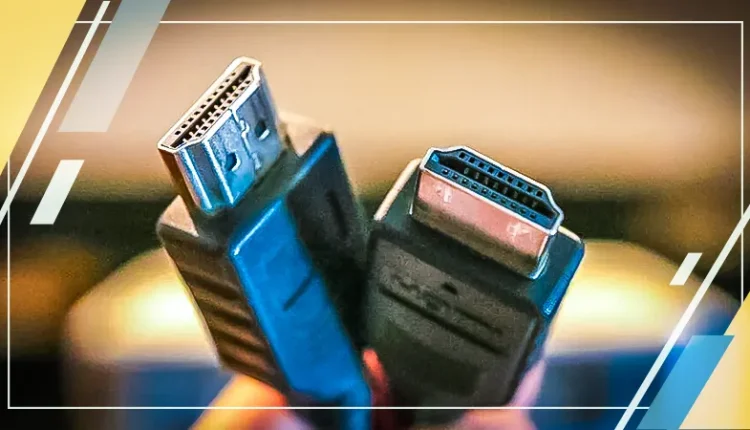In today’s digital age, HDMI cables are essential for anyone looking to connect their devices to a screen. Whether you’re setting up a home theater, gaming console, or office presentation, choosing the right HDMI cable is crucial for the best viewing experience. In this comprehensive guide, we’ll cover everything you need to know about HDMI cables, including the different types, how they work, and what to look for when purchasing one.
What is an HDMI Cable?
High-Definition Multimedia Interface (HDMI) is a proprietary audio/video interface for sharing uncompressed video data and uncompressed or compressed digital audio data from an HDMI-compliant source device to a compatible display screen. This technology has revolutionized the way we connect devices, offering a single-cable solution for both audio and video signals.
Types of HDMI Cables
There are several types of HDMI cables, each designed for specific purposes. Understanding these can help you make the right choice for your needs.
1. Standard HDMI Cable
This HDMI cable can handle most home applications and can transmit video resolutions of 720p and 1080i. These cables are suitable for most televisions and basic setups where high-definition content isn’t a priority.
2. High-Speed HDMI Cable
The High-Speed HDMI cable supports top-notch video resolutions of 1080p and beyond, such as 4K, 3D, and deep color. This type of cable is perfect for advanced home theaters and gaming systems, ensuring high-quality video and audio transmission.
3. Premium High-Speed HDMI Cable
Premium High-Speed HDMI cables are certified to handle 4K/Ultra-HD resolutions with features like High Dynamic Range (HDR) and expanded color spaces. These cables are ideal for use with the latest 4K TVs and other high-resolution devices.
4. Ultra High-Speed HDMI Cable
The Ultra High-Speed HDMI cable supports even higher resolutions, including 8K with HDR, and has increased bandwidth for more advanced audio and video signals. This cable type is future-proof and ensures compatibility with upcoming technologies.
Key Features to Consider
When selecting an HDMI cable, there are several features to keep in mind to ensure optimal performance.
Bandwidth
The bandwidth of an HDMI cable determines how much data it can transmit at once. Higher bandwidth cables are necessary for transmitting high-definition video and audio signals without compression. Look for cables that support at least 18Gbps for 4K content.
Length
HDMI cables come in various lengths, and choosing the right length is important to avoid signal loss. For most setups, a cable length of up to 15 feet works without issues. For longer distances, consider using an HDMI signal booster or an active HDMI cable to maintain signal integrity.
Connector Type
HDMI connectors come in different sizes: Standard (Type A), Mini (Type C), and Micro (Type D). Ensure that the cable’s connector type matches the ports on your devices. Adapters are available if you need to convert between types.
Build Quality
The build quality of an HDMI cable can affect its durability and performance. Look for cables with gold-plated connectors, as these resist corrosion and provide a better connection. Additionally, braided or reinforced cables offer greater protection against wear and tear.
HDMI Cable Compatibility and Features
HDMI cables offer various features that enhance your viewing experience. Here are some key ones to consider:
ARC and eARC
The Audio Return Channel (ARC) and Enhanced Audio Return Channel (eARC) allow the audio signal to travel both ways along the cable. This feature simplifies your setup by eliminating the need for an additional audio cable between your TV and audio system.
CEC
Consumer Electronics Control (CEC) is a feature that allows you to control multiple devices with a single remote. With CEC, you can turn on your TV, sound system, and Blu-ray player with one button press, simplifying your home theater setup.
HDR Support
High Dynamic Range (HDR) provides greater detail and color depth in video content. Make sure your HDMI cable supports HDR if you want to experience the full capabilities of your 4K or 8K TV.
Choosing the Right HDMI Cable
When selecting an HDMI cable, consider the following factors to ensure you get the best performance for your needs:
- Check Compatibility: Ensure the cable is compatible with your devices’ ports and supports the features you require, such as 4K resolution or HDR.
- Look for Certification: Opt for HDMI cables that are certified by HDMI Licensing LLC to guarantee they meet the required performance standards.
- Read Reviews: User reviews can provide insights into a cable’s real-world performance and reliability, helping you make an informed decision.
Common HDMI Cable Myths
There are several myths surrounding HDMI cables that can confuse consumers. Let’s debunk some of the most common ones:
1. Expensive Cables are Better
While higher-priced cables may offer better build quality, they don’t necessarily improve signal quality. For most setups, a mid-range HDMI cable will perform just as well as an expensive one.
2. All Cables Support 4K
Not all HDMI cables are capable of transmitting 4K signals. Ensure the cable is labeled as “High-Speed” or “Premium High-Speed” to support 4K resolutions.
3. Longer Cables Degrade Signal Quality
While longer cables can lead to signal degradation, this issue can be mitigated with quality cables or signal boosters. For most setups, lengths up to 15 feet won’t experience noticeable signal loss.
Conclusion
HDMI cables play a crucial role in connecting our digital devices, and choosing the right one can greatly impact your viewing experience. By understanding the different types, features, and factors to consider, you can make an informed decision that meets your needs. Whether you’re setting up a new home theater or upgrading your current setup, the right HDMI cable ensures you enjoy the best audio and video quality available.


